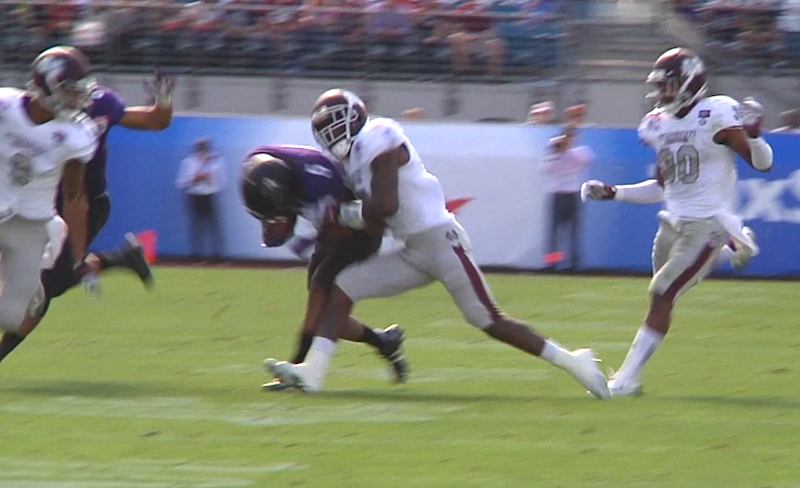WASHINGTON, D.C. – Amid the buzz about the frequency of concussions in professional and college sports, the NCAA issued guidelines this week aimed at keeping student athletes safer.
The guidelines address medical care for college students, diagnoses and management of sport-related concussions, and most notably contact at football practices. College football teams could schedule no more than one contact practice per day during preseason in August and no more than two contact practices per week in season and post-season.
“This is the beginning of a cultural change that we hope will permeate youth and intercollegiate sports,” said NCAA Chief Medical Officer Brian Hainline. “Our society is in need of this cultural change.”
Following a summit on college football safety in January, a task force composed of athletic trainers, neurologists, team physicians, university sports medicine program directors, the American Football Coaches Association and officials from football conferences was charged with creating these guidelines.
Although they are not yet mandatory policies incorporated into NCAA bylaws, the framers of the guidelines hope they will be adopted by individual institutions and by the athletic conferences.
“The intent wasn’t to establish bylaws, but to create guidelines as a result of a broad coalition of groups,” said Scott Anderson, president of the College Athletic Trainers’ Society. “We have some expectations that they’ll be well received because they’ve been vetted by various groups of stakeholders throughout the process.”
The guidelines mirror policies implemented by the Ivy League in 2011 and by the PAC-12 last season. Representatives from the Ivy League said the limited contact practice requirements benefit their teams.
“We spend more time working through plays and working through routes and concentrating on our skills,” said Jim Case, head football trainer at Cornell University. “From a coach’s standpoint, the rules are beneficial because they produce less injuries and give us fresher players on game day.”
Anderson agreed saying the guidelines aim to foster “not just safer, but better football.”
The NCAA said making the guidelines part of the organization’s bylaws, while an option, would be a lengthy process. Instead, the Indianapolis-based NCAA opted to release the guidelines so that they can be “updated real-time as emerging evidence [on injuries] becomes available.”
However, NCAA officials strongly encouraged universities to put these rules in place on their own.
“Colleges that deviate from the guidelines are deviating from a newly established cultural norm. Word of such deviation could place the institution at a disadvantage from an ethical and leadership perspective,” Hainline said in an email.
Schools that choose not to follow the guidelines would put their athletes at a greater risk for all injuries, not just concussions, he said.
Randy Edsall, head football coach at the University of Maryland, said the new guidelines would not change much of what his team already does to ensure athlete safety, but are important nonetheless.
“You’re never going to be 100 percent injury-free simply because of the nature of the sport,” Edsall said in a telephone interview. “But if you can do anything to help prevent concussions, you’re heading in the right direction. The fact that these guidelines are coming from the governing body will hopefully inspire all conferences to adopt the policies.”
Trainer Scott Anderson agreed, underscoring player safety as the driving force behind the guidelines in the first place.
“We are confident that schools will incorporate these guidelines and create an expanded margin of safety of players and overall healthier teams which is the most important concept here.”


